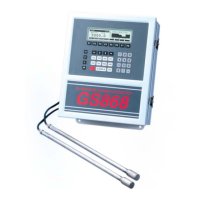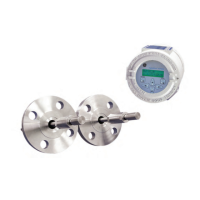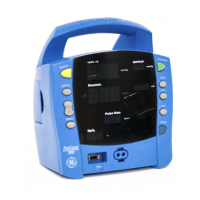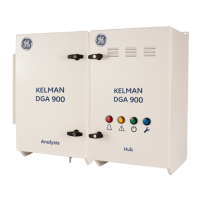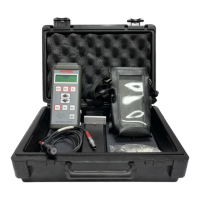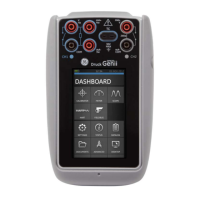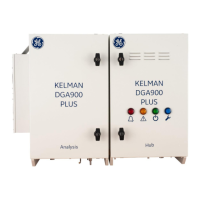Chapter 2. Error Codes and Screen Messages
18 DigitalFlow™ GF868 Service Manual (1 and 2-Channel)
E0: No Error
Problem: No error condition currently exists.
Cause: This message appears briefly to confirm that the response to another error message has corrected the
problem.
Action: No action is required.
E1: Low Signal
Problem: Poor ultrasonic signal strength or the signal exceeds the limits entered via the User Program.
Cause: Poor signal strength may be caused by a defective cable, a flowcell problem, a defective transducer or a
problem in the electronics console. A signal that exceeds the programmed limits is probably caused by the
entry of an improper value in the SETUP SIGNL submenu of the User Program.
Action: Using the procedures in Chapter 3, Diagnostics, check the components listed above. Also, check the value
programmed into the SETUP SIGNL submenu, as described in the Operator’s Manual.
E2: Sound Speed Error
Problem: The receive signal is detected too close to the open or close of the receive window.
Cause: Incorrect programming of the path length. Loss of signal, so that noise at the start of the window is
triggering the measurement.
Action: Verify programming of the path length. Check for loss of signal.
E3: Velocity Range
Problem: The velocity exceeds the limits programmed in the SETUP submenu of the User Program.
Cause: This error may be caused by the entry of improper programming data or by poor flow conditions and/or
excessive turbulence.
Action: Make sure the actual flow rate is within the programmed limits. See the Programming Manual for details.
Refer to Chapter 3, Diagnostics, to correct any flowcell and/or transducer problems.
E4: Signal Quality
Problem: The signal quality is outside the limits programmed in the SETUP submenu of the User Program.
Cause: The peak of the upstream or downstream correlation signals has fallen below the correlation peak limit, as
set in the SIGNL submenu. This may be caused by a flowcell or electrical problem.
Action: Check for sources of electrical interference and verify the integrity of the electronics console by
temporarily substituting a test flowcell that is known to be good. Check the transducers and relocate them,
if necessary. See Chapter 3, Diagnostics, for instructions.
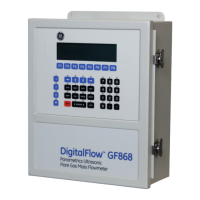
